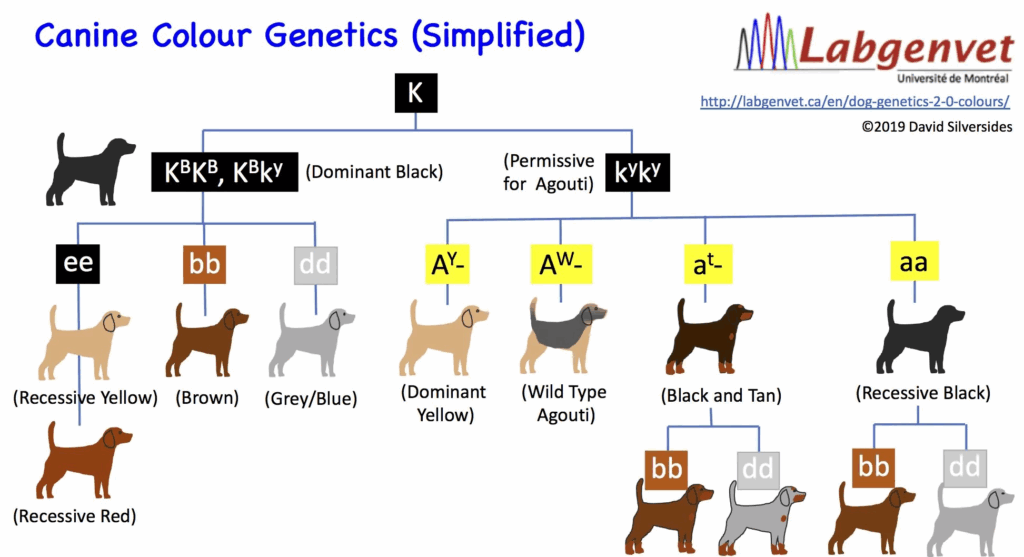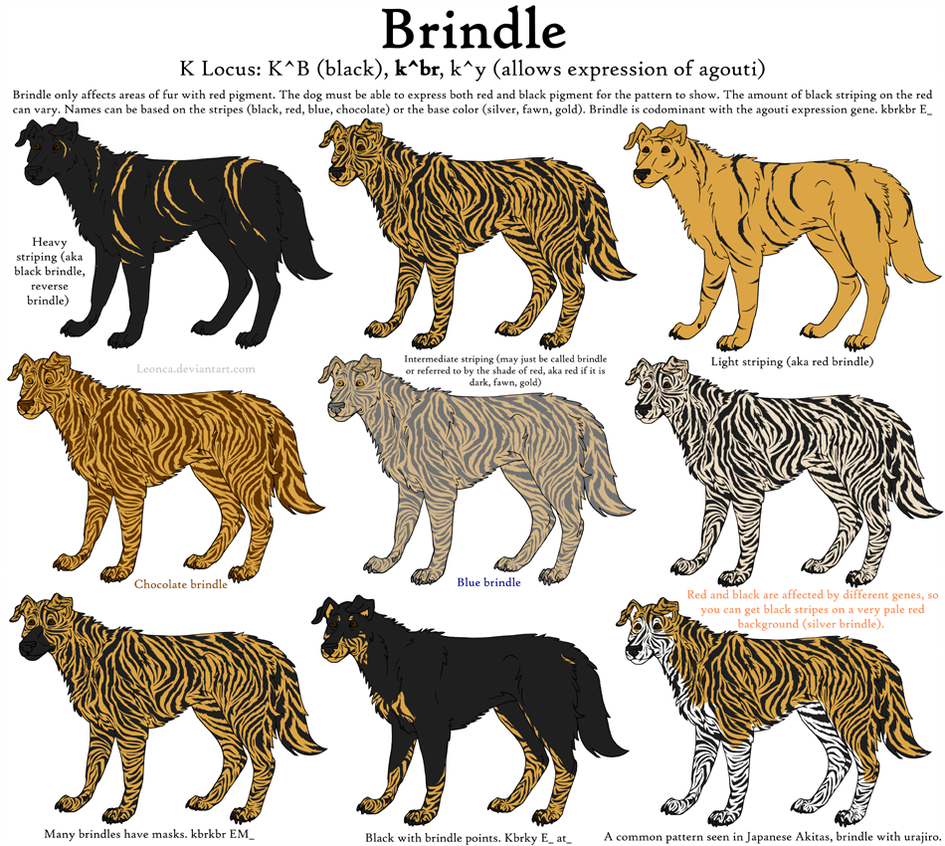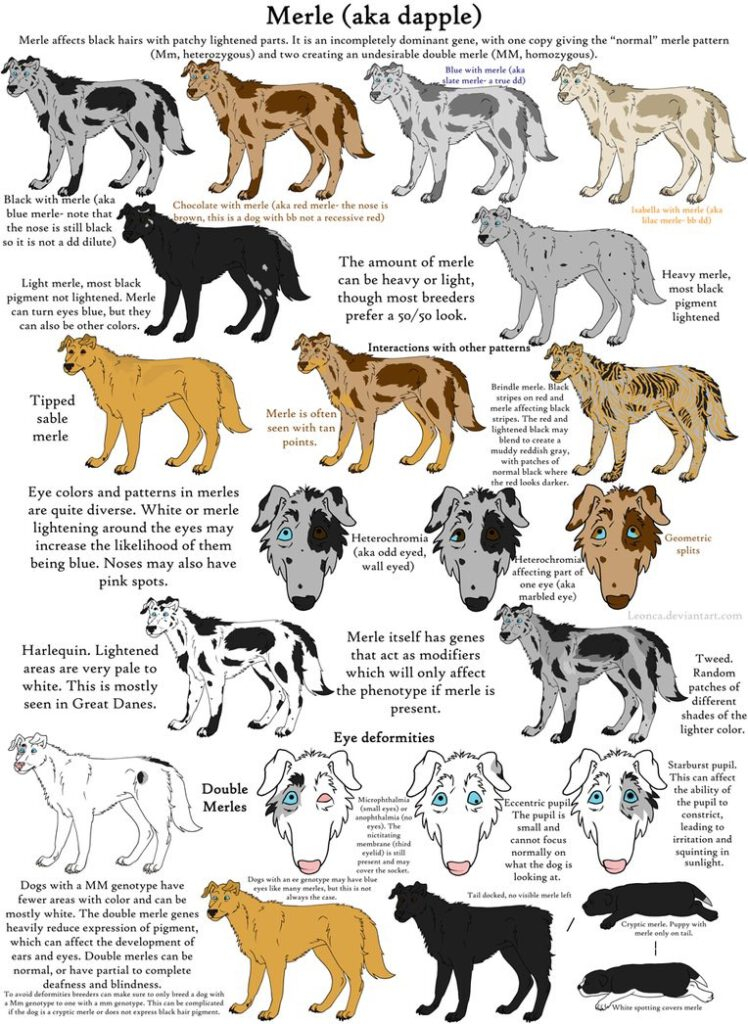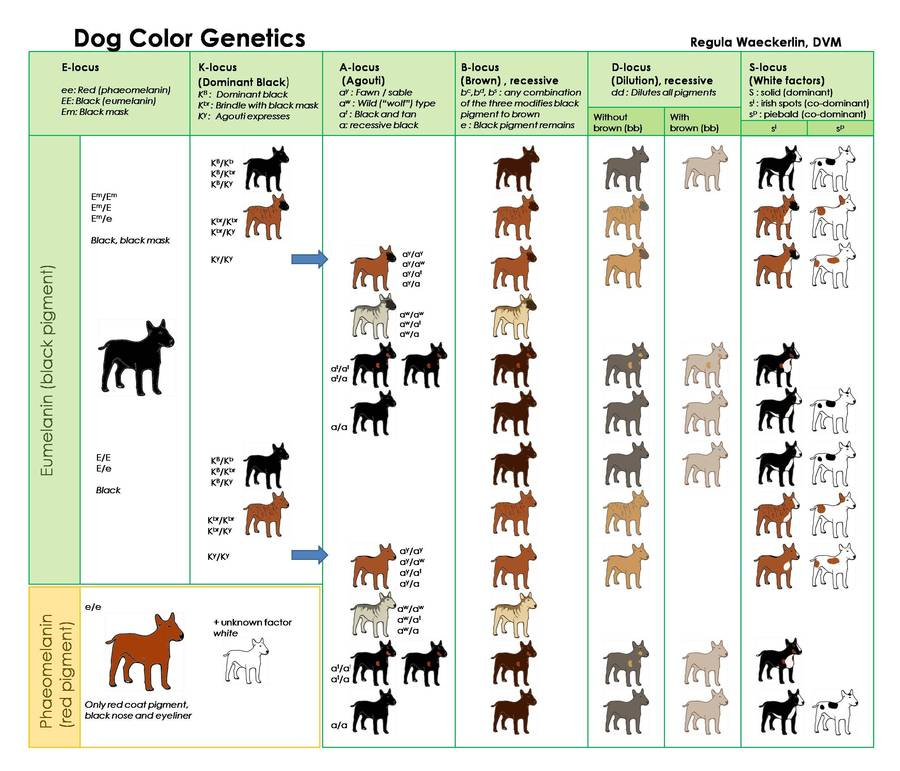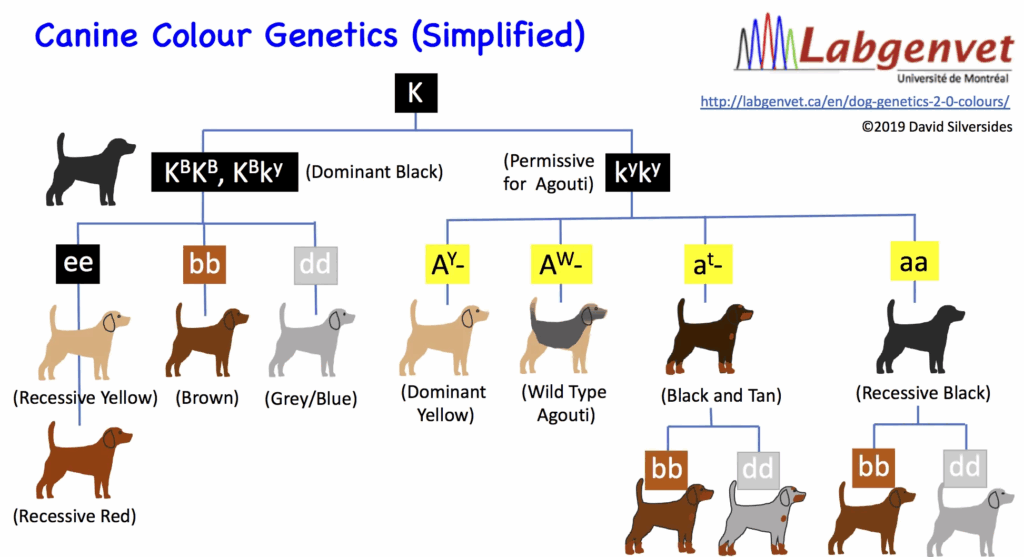When it comes to understanding your dog’s coat color, genetics play a significant role. Just like humans, dogs inherit genes from their parents that determine their physical characteristics, including coat color. The most common coat colors in dogs are black, brown, white, and red, but there are many variations and combinations that can result from different gene combinations.
One way to visualize how genes determine coat color is through a dog color genetics chart. This chart shows the different gene combinations that can result in various coat colors and patterns. By understanding how these genes work together, you can predict what color puppies a mating pair may produce.
Dog Color Genetics Chart
Using a Dog Color Genetics Chart
When using a dog color genetics chart, it’s essential to understand the basics of genetics. Each dog has two copies of each gene, one inherited from each parent. Some genes are dominant, meaning they will always express themselves in the dog’s coat color, while others are recessive, meaning they will only show up if both copies of the gene are present.
By looking at a dog color genetics chart, you can see which genes are responsible for specific coat colors and patterns. For example, if a dog has one copy of the gene for black coat color and one copy of the gene for brown coat color, it may have a black coat with brown highlights. Understanding these gene combinations can help breeders predict what colors their puppies may have.
Common Coat Colors and Patterns
Some of the most common coat colors and patterns in dogs include solid colors like black, brown, and white, as well as combinations like brindle, sable, and merle. Each of these colors and patterns is determined by specific gene combinations, which can be visualized on a dog color genetics chart.
By studying a dog color genetics chart and understanding how genes interact to produce different coat colors and patterns, you can gain insight into your dog’s genetic makeup and better predict what colors their offspring may have. Whether you’re a breeder looking to produce specific colors or simply curious about your dog’s coat genetics, a dog color genetics chart can be a valuable tool in understanding your furry friend.
By using a dog color genetics chart, dog owners and breeders can gain a deeper understanding of how genes determine coat color and patterns in dogs. By studying gene combinations and understanding dominant and recessive genes, you can predict what colors puppies from a mating pair may have. With this knowledge, you can make informed decisions about breeding and have a better appreciation for the genetics behind your dog’s unique coat color.
Download Dog Color Genetics Chart
Dog Color Genetics Chart
Dog Color Genetics 13 Royal Bloodlines
Dog Color Genetics Artofit
Dog Genetics 2 1 Colours Chart Laboratoire De G n tique V t rinaire
